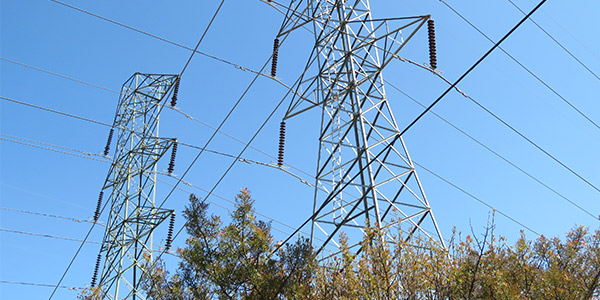The Bonneville Power Administration has pulled back into a more cautious operational posture in response to the COVID-19 pandemic after relaxing restrictions in June, agency officials said Tuesday.
The return to a “Response Level 3” posture (from Response Level 2-A) comes just two months after BPA lifted restrictions enough to resume work on some maintenance and construction projects. That move aligned with the reopening of Pacific Northwest economies following stay-at-home orders issued by state governments in March.
Now the federal power marketing administration says it is “standing down” on any nonessential transmission or generation projects.
“We’re deferring all maintenance and construction projects that are not tied to life safety or reliability,” Nadine Coseo, BPA senior financial analyst, told listeners during a quarterly business review (QBR) workshop Wednesday.
Coseo said the change in posture was driven by agency metrics that consider the region’s caseload of positive COVID-19 tests. Those metrics are showing “small clusters popping up around our territory, especially where the construction crews have been performing their work,” she said. “We determined it was in the best interest for Bonneville to see if the metrics will either flatten or decline again before resuming our former phase.”
BPA on Tuesday assured its customer base of publicly owned utilities that its crews will continue to respond to outages and other emergencies. It will also keep focusing on enabling office staff to telecommute in order to “reduce the concentration of employees in any one location and continue meeting business requirements.”
The agency decided to resume a more restrictive pandemic posture one day after a Aug. 11 QBR call in which it explained that its third-quarter projections show it earning $152 million in net revenues for fiscal year 2020, which ends next month. That estimate puts BPA well above a second-quarter “baseline” case prediction of $110 million and a second-quarter pandemic “bad case” figure of $44 million. It also represents a steep rise from the agency’s rate case target of $12 million for 2020. (See BPA Poised to Weather COVID Impact.)
BPA explained that while reduced expenses account for some of the expected increase in net revenues, the greatest boost stems from increased net operating income — largely the product of higher profits from secondary sales of surplus energy.
During Tuesday’s call, Steve Gaube, a financial analyst with BPA’s power generation division, confirmed that the revenue boost was more the result of high market prices than increased sales volume during what has been an average water year for the region’s hydroelectric producers.
“We did see considerably higher Northwest regional prices, particularly in winter,” Gaube said, adding that BPA expects this month to yield another rise in secondary sales because of high temperatures in the West.
During Tuesday’s call, BPA staff also clarified that the agency discontinued use of a separate pandemic “bad case” because it was equipped to factor pandemic effects into its general third-quarter forecast.
But staff also noted the third-quarter projections don’t consider the impact of BPA’s retreat into Response Level 3, which generates uncertainty around how the renewed delay in capital projects could move some costs into the agency’s expense accounts and reduce the net revenue figure.
Addressing capital projects related to transmission, BPA accountant Kevin Bernards said the third-quarter projections “have kind of shown optimism” about 2020 capital budgets.
“However, the recent decision to return to a more restrictive posture will negatively impact this forecast,” Bernards said. “At this point, it’s still really too early to know the impacts, but this decision will definitely increase the risk that BPA will need to write off a portion of the indirect costs to expense. We’re going to continue to monitor these impacts and just track what the impacts on the capital execution side will look like.”
But BPA’s generation side still foresees no capital project write-offs for this fiscal year despite delays caused by March’s stay-at-home orders, according to Scott Eggimann, a lead accountant.
“I would say the message around this is really we’re in a wait-and-see mode,” Coseo said. “It’s just too early to tell, and we will know more as the year progresses.”




